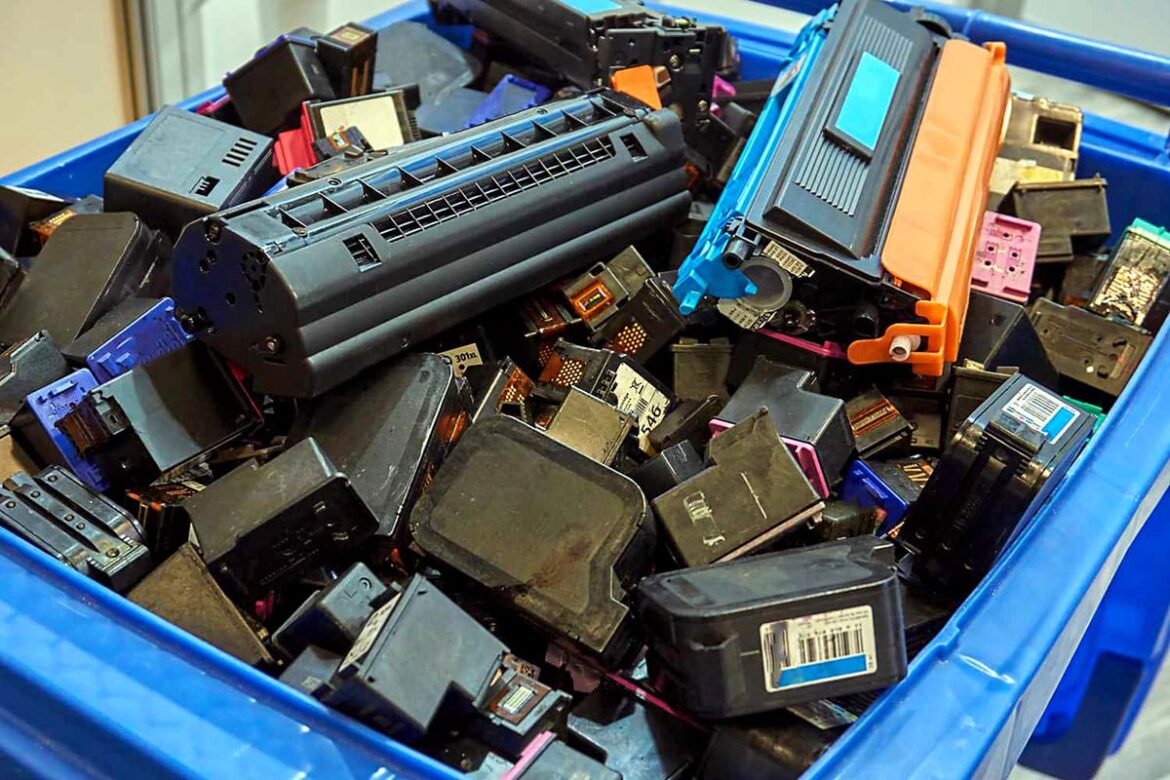Disposing of printer cartridges correctly is not only important for the environment, but also required by law. Empty cartridges can be disposed of in an environmentally friendly manner—there are various recycling options available to you.
Disposing of printer cartridges
There are various environmentally friendly ways to dispose of your printer cartridges: return them to the manufacturer or retailer, take them to a recycling center or waste disposal facility, use collection boxes or special take-back systems. In this way, you are making an important contribution to environmental protection and ensuring that valuable raw materials are recycled properly.
- Printer cartridges do not belong in the residual waste or the yellow bag, as they are considered electronic waste and may contain harmful substances.
- Empty printer cartridges can be easily disposed of at a nearby recycling center or waste collection point. These facilities accept cartridges free of charge and ensure environmentally friendly disposal or recycling.
- Many manufacturers such as HP, Canon, Epson, and Brother offer free programs for returning empty cartridges. Often, a return envelope is included with the cartridges, or you can print a shipping label from the manufacturer’s website and return the empty cartridges by mail.
- Retailers and electronics stores where you buy new cartridges are also often required to take them back. Ideally, ask about available return options when you make your purchase.
- There are also special collection boxes, for example from non-profit organizations, where you can drop off empty cartridges.
- Notes: Never dispose of cartridges in household waste, the toilet, or the sink. This is harmful to the environment and violates legal requirements. If you have larger quantities of cartridges, you can also collect them and send them free of charge to specialized recycling companies. All you usually need is a cardboard box and a free shipping label.
What materials printer cartridges contain and how they are recycled
Proper disposal and recycling of empty printer cartridges help to conserve natural resources and reduce the burden on the environment in the long term. Recycling is usually more environmentally friendly than simply recycling raw materials, as it allows for multiple uses and consumes less energy.
- Printer cartridges are mainly made of plastic. The housing and many components are made of various types of plastic that are not biodegradable. Contacts, conductor tracks, and some mechanical components contain metals such as copper, aluminum, or steel.
- Modern cartridges contain chips and electronic components that are necessary for communication with the printer. Even after use, small amounts of ink or toner may remain in the cartridge.
- There are two main methods for recycling printer cartridges. In remanufacturing, also known as refilling or remanufacturing, intact, empty printer cartridges are collected, thoroughly cleaned, and then refilled with ink or toner. This method saves raw materials and energy, as the housing and many components can be reused. Recycling is particularly beneficial for the environment as it reduces CO₂ emissions and plastic waste.
- Defective or non-refillable cartridges are sent to special recycling plants, where they are crushed and broken down into their individual components. The individual materials (plastics, metals, electronics) are separated from each other and reused as recyclable materials. This process is often used by original manufacturers such as HP, who use the raw materials obtained to make new products.

